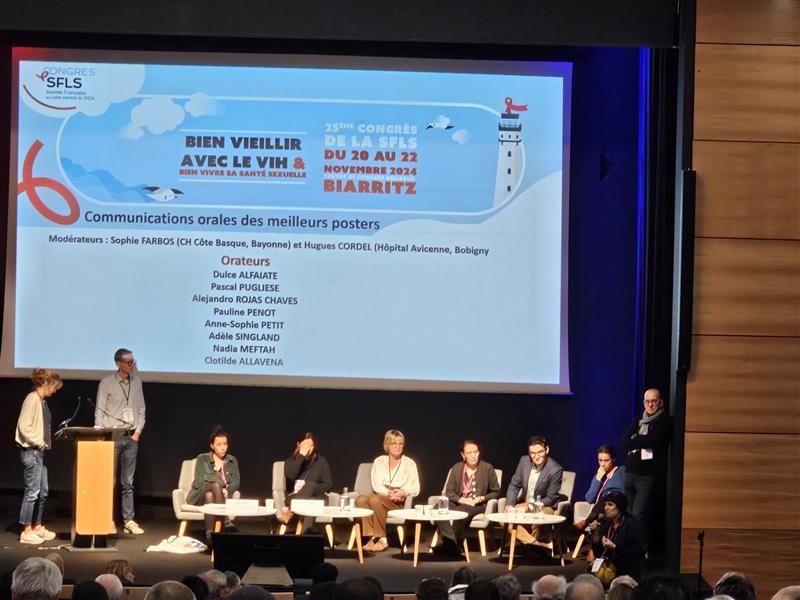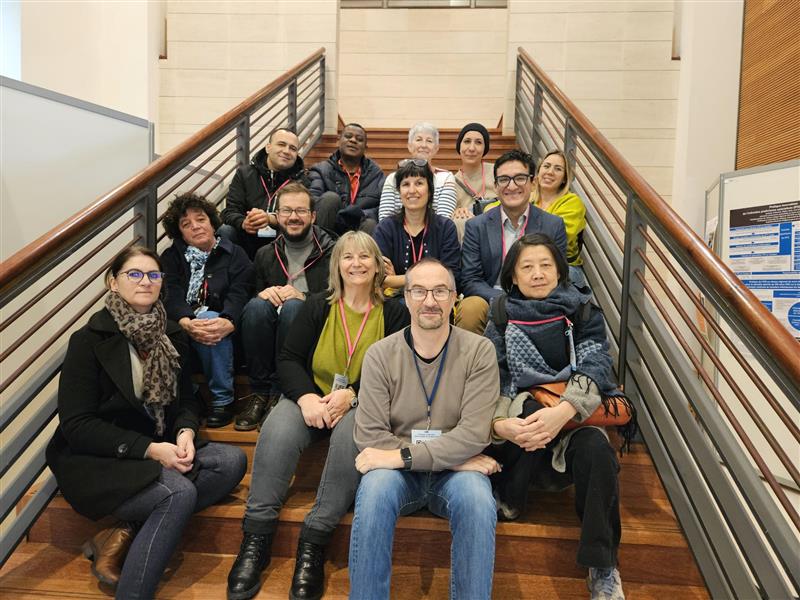
Latest results of the COINCIDE study at the 2024 SFLS Congress
Last updated on 04 December 2024
In brief
The 25th SFLS Congress was held in Biarritz, France, from 20 to 22 November 2024 on the theme of ‘Ageing well with HIV, ageing in good sexual health’. The latest results of the COINCIDE study were presented there.
The COINCIDE study
The COINCIDE study, financially supported by ANRS MIE, provided an unprecedented description of the HIV epidemic in the Île-de-France (IdF) region on a detailed geographical scale, including districts (arrondissements) and municipalities. The maps of the HIV epidemic in IdF were produced using data collected by five IdF COREVIH from 10,410 newly diagnosed people living with HIV/AIDS (PLWHA) over the period 2014-2021. These maps prove invaluable in identifying the ‘key areas’ to be given priority for controlling the epidemic, even in the outer suburbs: those where the rates and numbers of new diagnoses are high, indicating an active epidemic, and those where late diagnosis (LD) is frequent, indicating that key populations are not being reached, or only to a limited extent, by current screening strategies.
Latest results of the COINCIDE study
Two studies using COINCIDE data were presented at the SFLS Congress in 2024:
- « Socio-spatial inequalities in late HIV diagnosis in Ile-de-France » (Alejandro Rojas-Chaves, et al)
- « PLWHA living in the suburbs and receiving care in Paris » (Alejandro Rojas-Chaves, et al)
Spatial inequalities in late diagnosis
A striking feature of the maps presented as part of the first study is the very wide disparity in the prevalence of late diagnosis (CD4<350/mm3 or AIDS) across the area. Regardless of the population (MSM, women, foreign-born people who are not MSM), late diagnoses (LDs) are often much more frequent outside Paris. They account for almost half of all new diagnoses and are a key issue in the epidemic.
Their consequences are deleterious both at an individual level, through the excess morbidity and mortality they cause, and at a population level, where they contribute to maintaining the epidemic and led to substantial and permanent increases in the cost of caring.
Analytical work based on COINCIDE data has revealed socio-spatial inequalities of LD in IdF. People living in precarious housing conditions have a 52% increased risk of being diagnosed late, and those living in the most deprived neighbourhoods have a 40% increased risk. In addition, foreign-born men (non-MSM) and foreign-born women are most at risk of LD (65% and 57%, respectively), while MSM born in France are least at risk (30%).
Results of this study suggest strong socio-spatial segregation of key populations affected by HIV epidemic in IdF. This needs to be taken into account in prevention and screening strategies.
High variations in the care of PLWHA living in the suburbs
COINCIDE data suggest that there are significant patient flows between residence and point of care in IdF. The aim of the second study presented at the congress was to characterise these flows.
Nearly 40% of PLWHA living in the suburbs travel to Paris for healthcare. They are very different from those who stay in the suburbs: they are more likely to be MSM, to have no problems of housing insecurity and to live in an area with greater access to HIV testing services.
These results raise questions about the cause of these patient flows, which needs to be analysed in more detail.
Conclusion
COINCIDE data provide a unique opportunity for a socio-spatial analysis of the HIV epidemic in IdF. Findings of these two studies underline the importance of continuing efforts to support the most vulnerable populations in the most disadvantaged areas, in order to better control the epidemic.
Late diagnosis: patients and methods
Cross-sectional study based on data from adult PLWHA receiving care in IDF COREVIH, who were diagnosed in 2014-2021. Seven transmission groups were characterised: France-born (Fr) MSM/foreign-born (For) MSM, Fr/For non-MSM, Fr/For women, transgender people. Housing insecurity (homeless or staying with a third party) was known. At regional level, the place of residence and the corresponding level of deprivation in the neighbourhood were taken into account using the EDI (European Deprivation Index), as well as the availability of and access to general practitioners and the rate of HIV testing services. Factors associated with late diagnosis were identified using multilevel models.
Care of PLWHA living in the suburbs: patients and methods
Cross-sectional study based on data from adult PLWHA receiving care in IDF COREVIH, who were diagnosed in 2014-2021. PLWHA lived in the Paris suburbs at the time of diagnosis. Factors associated with the care of PLWHA in Paris were identified using multilevel models, in particular the group at risk of transmission, housing insecurity (personal home/ homelessness or staying with a third party), the place of residence and the corresponding level of deprivation in the neighbourhood were taken into account using the EDI (European Deprivation Index), and the availability of and access to general medicine.


